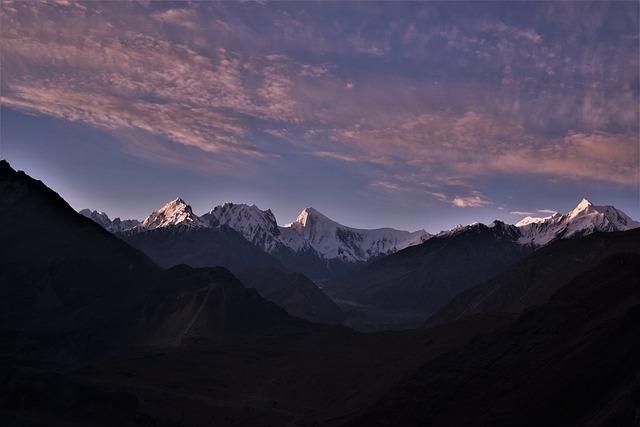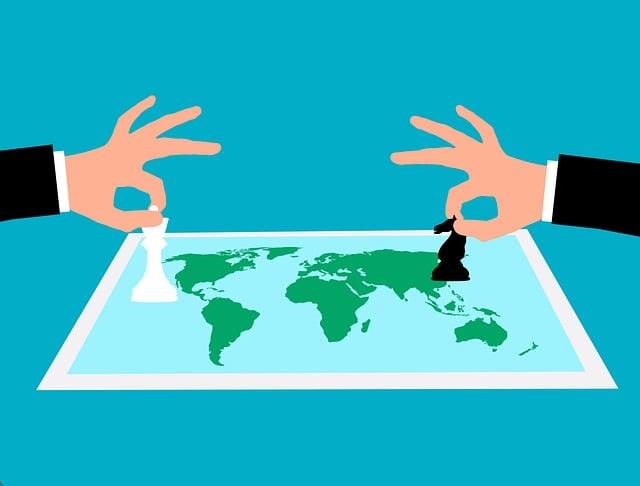In an era characterized by rapid globalization and intricate geopolitical shifts, the significance of individual nations in the arena of international relations has never been more pronounced. Pakistan, a country nestled at the crossroads of South Asia, Central Asia, and the Middle East, stands as a pivotal player in this complex web of global dynamics. With its rich history, diverse culture, and strategic location, Pakistan has continually shaped and been shaped by its relationships with neighboring countries and global powers alike. This article embarks on a journey to explore Pakistan’s multifaceted role in international relations, examining how its political, economic, and cultural interactions influence not only its own destiny but also the broader currents of global diplomacy. As we navigate the intricate layers of alliances, conflicts, and cooperation, we uncover the challenges and opportunities that define Pakistan’s presence on the world stage.
Evolving Geopolitical Landscape and Pakistans Strategic Position
The global stage is increasingly defined by shifting alliances and emerging threats, while Pakistan finds itself at a pivotal crossroads within this complex web of international relations. Strategically located at the junction of South Asia, Central Asia, and the Middle East, Pakistan has the potential to be a major player in regional stability. Its relationship with neighboring countries, geopolitical actors, and international organizations plays a crucial role in shaping its foreign policy. By leveraging its geography and military capabilities, Pakistan can engage in multifaceted diplomacy, aligning itself with various partners to address collective security challenges, such as terrorism and economic instability.
As global powers recalibrate their strategies, Pakistan must navigate its strategic partnerships with care. The bilateral ties with China, espoused through initiatives like the China-Pakistan Economic Corridor (CPEC), exemplify how Pakistan aims to enhance its infrastructure and economic robustness. Simultaneously, relations with the United States, India, and regional powers like Iran and Afghanistan continue to evolve, requiring a delicate balancing act. Below is a summary of Pakistan’s key strategic relationships:
| Partner | Focus Areas | Challenges |
|---|---|---|
| China | Economic, Military Collaboration | Dependency Concerns |
| United States | Counterterrorism, Economic Aid | Shifts in Policy Direction |
| India | Regional Security, Trade | Ongoing Tensions |
| Afghanistan | Security Cooperation | Political Instability |

Balancing Acts: Pakistans Relationships with Major Powers
Pakistan’s diplomatic balancing act is a complex tapestry woven with ties to major global powers, each demanding a delicate navigation of interests and ideologies. With a pivotal geographic location that connects South Asia, the Middle East, and Central Asia, Pakistan finds itself courted by both the East and the West. The nation has historically engaged in strategic partnerships to bolster its security and economic needs. Critical relationships include:
- United States: Historically viewed as an ally during the Cold War, its relationship has oscillated between cooperation and tension, particularly regarding counter-terrorism and regional stability.
- China: Strongly allied through economic collaboration under the China-Pakistan Economic Corridor (CPEC), this partnership offers Pakistan significant investments and infrastructure development.
- Russia: A re-emerging partnership focusing on energy projects, military cooperation, and mutual support on various global platforms.
However, the intricate dynamics of these relationships often lead to competing influences and demands. Balancing the strategic dialogues with the U.S. while nurturing a robust economic rapport with China is no easy feat. The following table illustrates key elements of Pakistan’s relationships with these powers:
| Major Powers | Key Interests | Considering Dynamics |
|---|---|---|
| United States | Security cooperation, counter-terrorism | Friction over military aid and regional policy |
| China | Investment, infrastructure development | Understanding regional influence and countering India |
| Russia | Energy cooperation, defense ties | Developing a unified stance on global issues |
This strategic navigation reflects Pakistan’s commitment to maintaining its sovereignty while optimizing its position in an increasingly multipolar world. As global dynamics continue to shift, Pakistan will undoubtedly need to refine its approach, balancing its partnerships with the diverse expectations of major powers while sustaining its national interests.

Economic Diplomacy: Leveraging Trade and Investment for Global Influence
In an era marked by increasing interdependence among nations, the strategic use of trade and investment has emerged as a pivotal tool for states like Pakistan to enhance their global standing. By fostering economic ties and cultivating a vibrant investment climate, Pakistan can not only bolster its own economic growth but also increase its leverage in international forums. Emphasizing partnerships with key players in both regional and global markets, Pakistan must focus on diversifying its trade portfolio while also attracting foreign direct investment (FDI). This multifaceted approach can open doors to technological transfers and improve infrastructure development, paving the way for enhanced competitiveness on the world stage.
To better understand how Pakistan can utilize economic diplomacy, it is essential to recognize several key strategies:
- Trade Agreements: Engaging in bilateral and multilateral trade agreements to reduce barriers and enhance market access.
- Diversification of Exports: Expanding the range of goods and services exported to minimize dependency on a few markets.
- FDI Incentives: Developing incentives for foreign investors that align with national interests and sustainable development goals.
- Investment in Human Capital: Prioritizing education and skill development to attract investment in high-tech industries.
Furthermore, establishing a clear framework for tracking progress in these areas can assist policymakers in making informed, data-driven decisions. The following table outlines some comparative metrics to gauge influence through economic diplomacy:
| Country | Trade Growth Rate (%) | Foreign Direct Investment ($ Billion) | Global Competitiveness Rank |
|---|---|---|---|
| Pakistan | 5.2 | 2.5 | 110 |
| India | 7.9 | 55.2 | 68 |
| Bangladesh | 8.3 | 3.5 | 103 |
By carefully assessing these metrics, Pakistan can articulate its narrative of growth and resilience, positioning itself as a vital player in the global economy while seeking to amplify its international influence.

Addressing Regional Challenges: Collaborations for Peace and Stability
In the complex tapestry of regional dynamics, collaboration emerges as a cornerstone for fostering peace and stability. Pakistan, strategically located at the crossroads of South Asia, Central Asia, and the Middle East, plays a pivotal role in addressing various challenges that affect not just its borders but the larger regional framework. By engaging in multilateral partnerships, Islamabad can work towards solutions that benefit neighboring countries while also safeguarding its own national interests. This cooperation could manifest through:
- Bilateral Agreements: Strengthening ties with neighboring states through trade, security pacts, and cultural exchanges.
- Peacekeeping Initiatives: Contributing to international peacekeeping missions in conflict zones.
- Intelligence Sharing: Collaborating on counter-terrorism efforts to combat extremism that transcends borders.
- Economic Collaborations: Investing in infrastructure projects that promote regional connectivity and economic growth.
The success of these collaborative efforts hinges on the willingness of regional powers to engage in dialogue and compromise. Moreover, pursuing a multidimensional approach that encompasses diplomatic, economic, and cultural elements can significantly enhance stability. A collaborative framework can be strengthened by facilitating platforms for discussion, such as:
| Platform | Purpose |
|---|---|
| Regional Security Forums | Address security concerns through collective decision-making. |
| Cultural Exchange Programs | Foster mutual understanding and respect among diverse communities. |
| Trade Agreements | Enhance economic interdependence to minimize conflicts. |
In Conclusion
As the sun sets on the intricate landscape of global relations, Pakistan stands at a crossroads, embodying a narrative woven with challenges and opportunities. Its strategic location, rich cultural heritage, and evolving partnerships position the nation as a pivotal player in the ever-shifting geopolitical arena.
In traversing the complexities of international relations, Pakistan not only grapples with historical legacies but also carves its path forward, striving to balance regional collaborations with global expectations. The journey ahead may be fraught with obstacles, yet it is also ripe with potential for growth and dialogue.
As we close this exploration of Pakistan’s role on the world stage, it is clear that the nation is not merely a participant in global dynamics but a key architect of its future. By engaging thoughtfully with allies and rivals alike, Pakistan has the opportunity to redefine its identity, promote stability, and contribute to a more interconnected world. The chapter of international relations continues to unfold, and Pakistan’s story is one that will undoubtedly shape the narrative for years to come.



